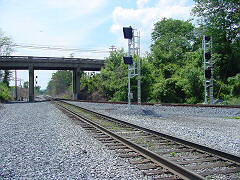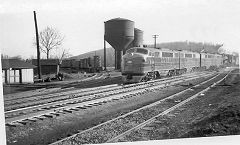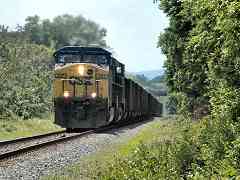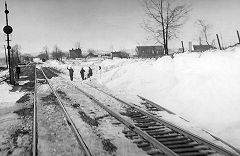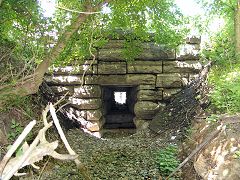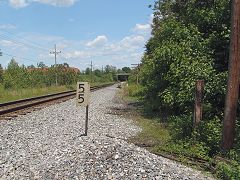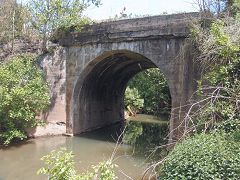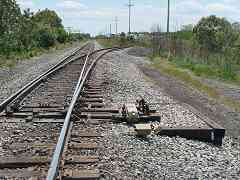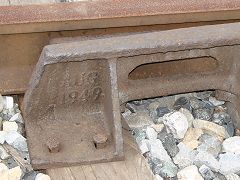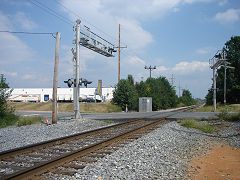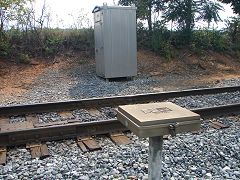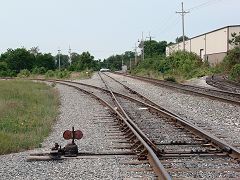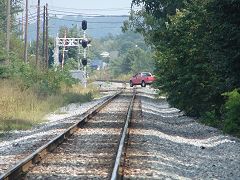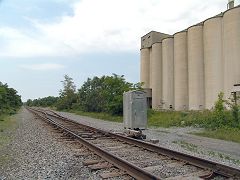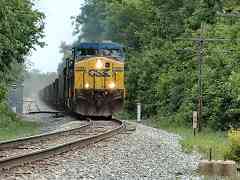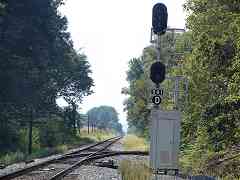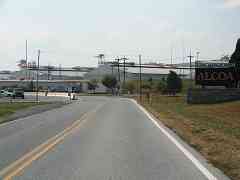|
Information included with this snowy photo claims it was snapped
near Frederick Junction, but determining its exact location
was an interesting puzzle. In fact, I had begun to think that
perhaps this was not in the vicinity of the Junction.
There appears to be an overpass in the distance, and the sun angle
implies this view looks west. The pictured overpass cannot be MD 355
since the Monocacy River or Frederick Junction wye would be visible
in the foreground, and I had (incorrectly) thought MD 355 was the only
overpass in the vicinity during this time frame.
Reader Al Moran clued me in that US 240, the predecessor to I-270,
was already in place by 1953, and the distant overpass was likely
that road. He added, "The thing that really makes me think it IS
Frederick Junction are the mountains in the background. When you
drive down 15 and 340, that's what it looks like."
Additional research shows there had been sidings just west of
Frederick Junction, and those sidings can be seen in this photo.
Thus, the puzzle has been solved: the pictured location is between
MD 355 and what is now I-270.
Link:
I-270 info
| 